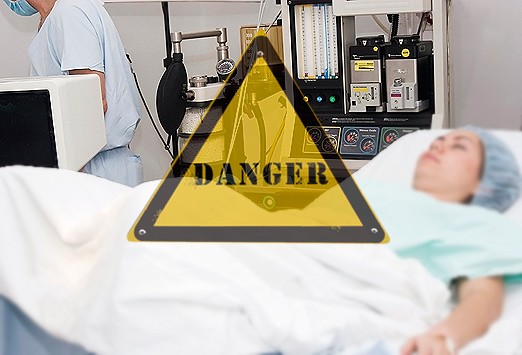.jpg)
Dealing with clinical adverse events is an essential medical liability for policy makers, regulatory authorities, health institutions and clinical staff.
(WHO) estimates that of out of 421 million hospitalizations globally each year, more than 42 million patients will suffer an adverse event.
The science of patient safety may get complex if incident evaluator failed to understand the thin line between possible clinical outcomes and unanticipated outcome, which leads to long battle and disputes among medical staff and others involved.
Unless a clearly defined language and classification of incidents, unexpected outcomes related to health care delivery itself is not easy to crack. Many incident report systems I came across lacking this understanding either by the tools available or lack of awareness in this area.
The JCAHO Patient Safety Event Taxonomy 2005 was one of the recent attempts to develop a common terminology and classification schema (taxonomy) for collecting and organizing patient safety data, which helped to facilitate a common approach for patient safety information systems. Followed to it we have seen a updated Patient Safety Taxonomy from WHO in 2009 and Saudi Patient Safety taxonomy as latest in the region.
Joint Commission International (JCIA) has updated 7th ed standards for Hospital accreditation with more clarity on Patient safety events which include adverse events, no-harm events, near misses, and hazardous conditions, which are defined as follows:
An adverse event is a patient safety event that resulted in harm to a patient.
A no-harm event is a patient safety event that reaches the patient but does not cause harm.
A near miss (or close call) is a patient safety event that did not reach the patient.
A hazardous (or “unsafe”) condition(s) is a circumstance (other than a patient’s own disease process or condition) that increases the probability of an adverse event.

What is Patient Safety Taxonomy (PST)
World Health organization defines PST as the Conceptual Framework for the International Classification for Patient Safety (ICPS) set out to define, harmonize and group patient safety concepts into an internationally agreed classification in a way that is conducive to learning and improving patient safety across systems.
Typically it includes an assigned code and definition of term for every micro level incidents, a classification structure and algorithm to define characteristic and relationships of incidents.
Why it is important
Registering and organizing adverse events, no-harm events, and near miss events facilitate the description, comparison, measurement, monitoring, analysis and interpretation of incidents to improve patient safety outcome and learning from it.
Applying a taxonomy will help to organize the wealth of information about medical events in an organization into “actionable knowledge” that can be used to improve clinical practice, patient safety and reduce risk. To better understand medical events, a common language to classify medical errors is needed (American Society for Healthcare Risk Management)
How to improve current practice
I will straight away make a reference to the new standard in the JCIA 7th Ed manual for Hospital accreditation, that should address the question at leadership level.
a) Hospital leadership has a mechanism for blame-free reporting of adverse events, no-harm events, and near miss events
b) Hospital leadership defines a process for managing adverse events that includes an analysis of the events to identify corrective actions.
c) Hospital leadership defines a process for managing near miss events and no-harm events that includes an analysis of the events to identify corrective actions.
d) Hospital leaders implement corrective actions, when appropriate, on the results of the analysis.
e) Hospital leaders monitor the implemented corrective actions for potential process failures (unintended consequences), effectiveness, and sustainability over time
Conclusion: to make the process working, organization should move into a digital incident reporting system with capability of hospital staff registering every incident with right language and assigned codes, inbuilt tools and framework to facilitate analysis and trigger suitable corrective actions, and finally capable of tracking implementation, monitor effectiveness and sustainability over time within the hospital or even across number of hospitals in a group of hospitals.
AccreHealth by Medas offer digital Incident reporting & analysis solutions that can transform your Incident Management system with built in taxonomy, Root cause tools, and easy to use and track by all involved matching to international standards.
Author is an accreditation consultant with an experience of leading 70+ hospitals across Middle East and Asia for their international accreditation, Mr. Thomas is known as a change agent, who advocates innovation and technology to facelift complex workflows in a Healthcare environment. Mr. Thomas can be reached at thomas@partnersconsultants.com or visit www.accrehealthtech.com

By Admin | Posted on April 7, 2021
